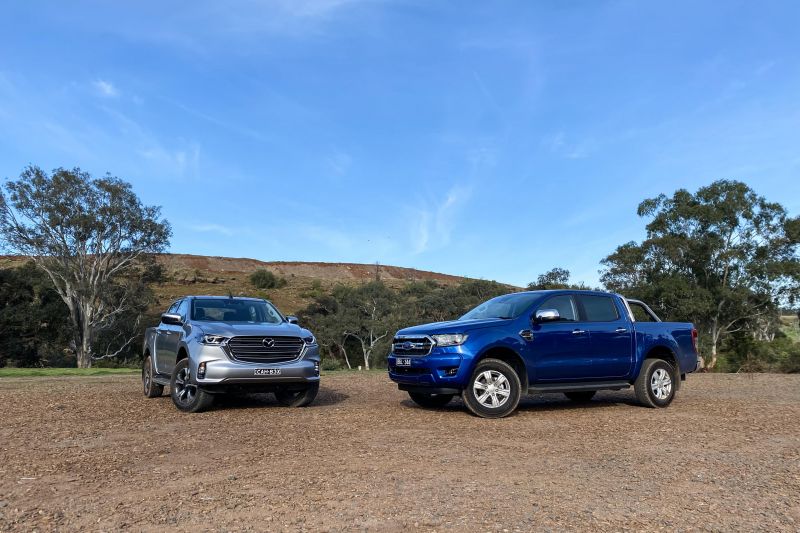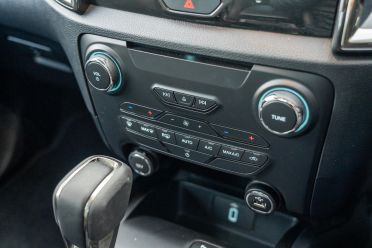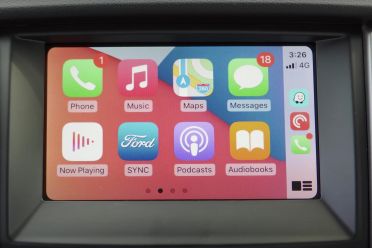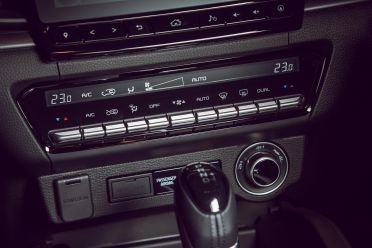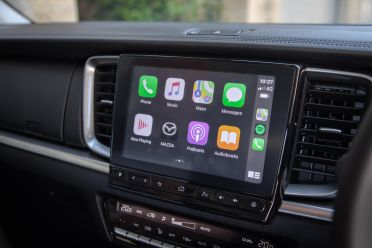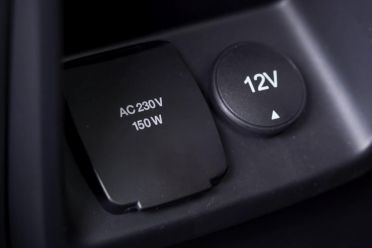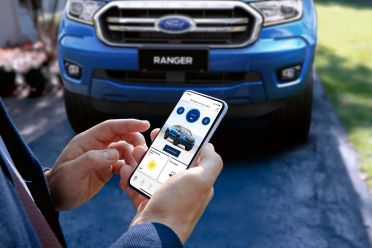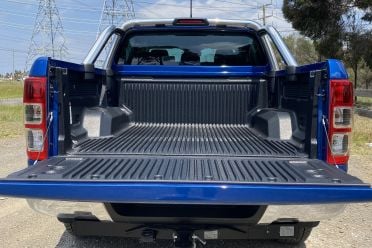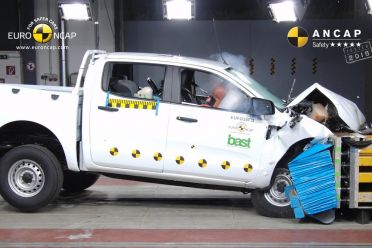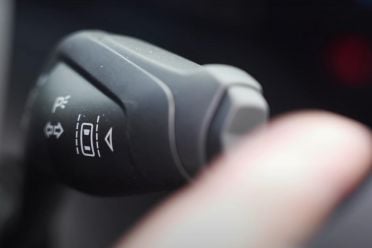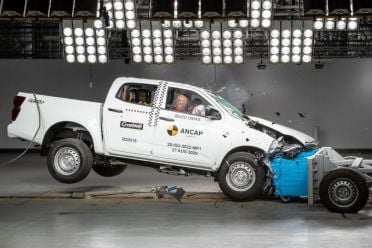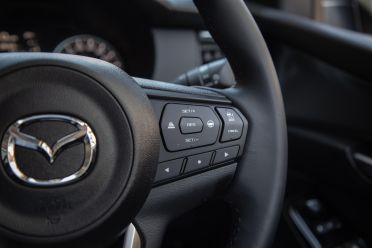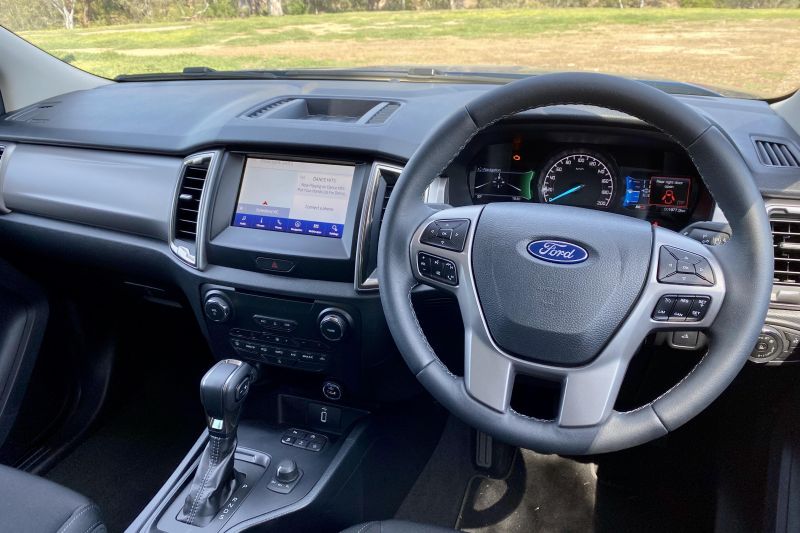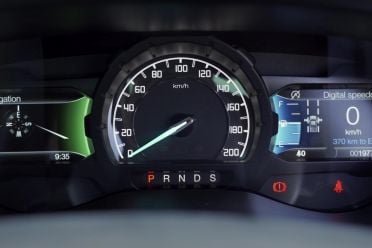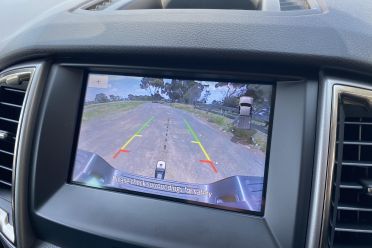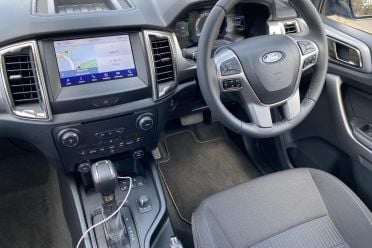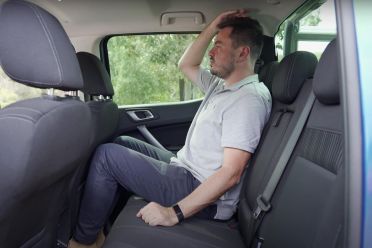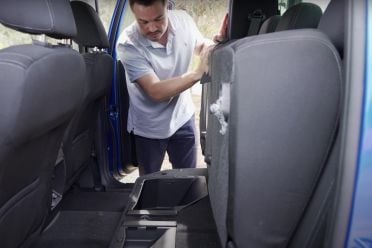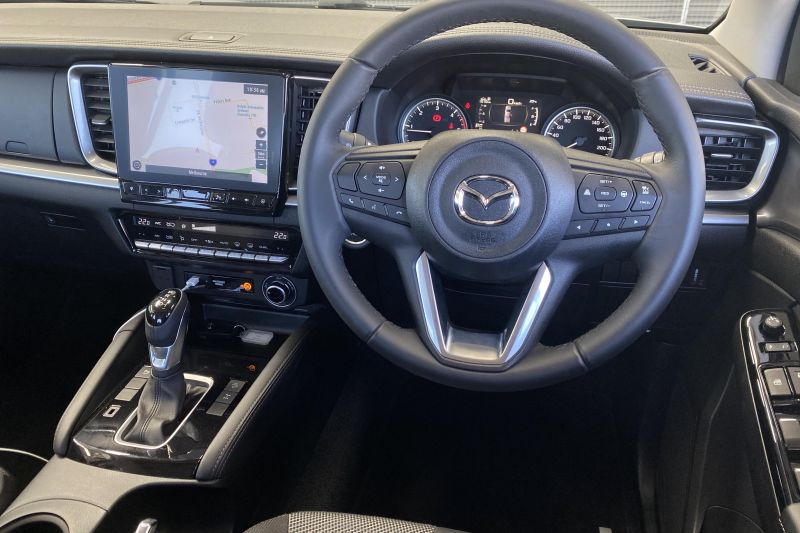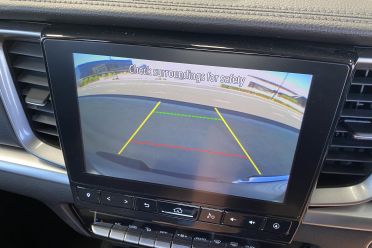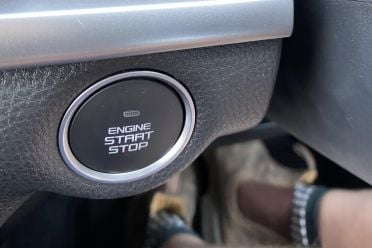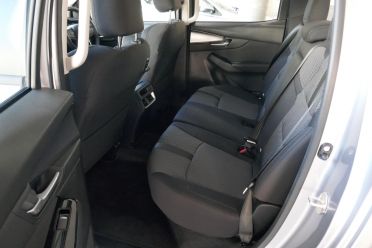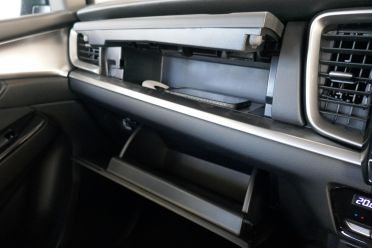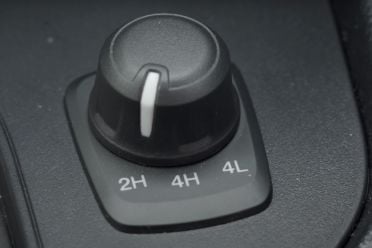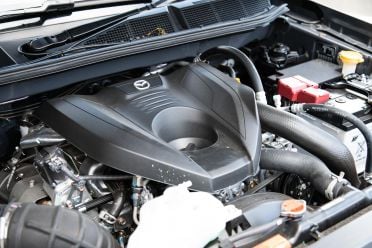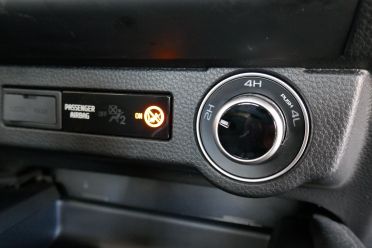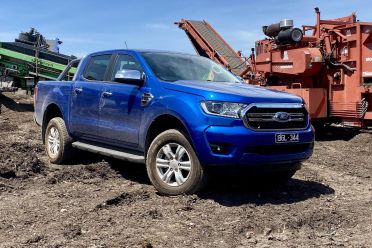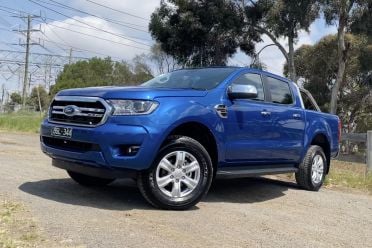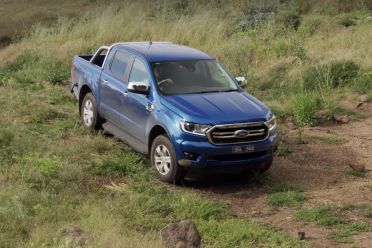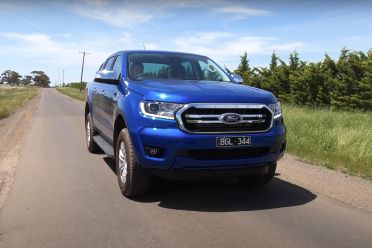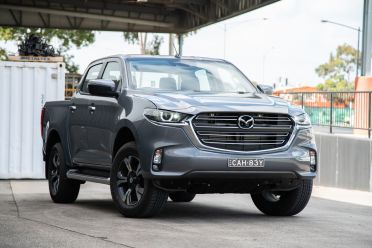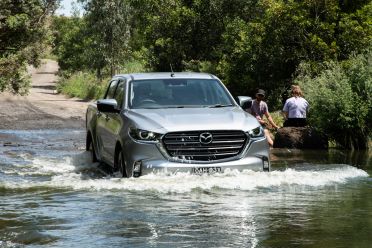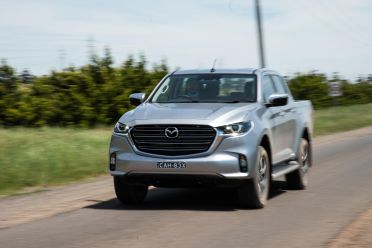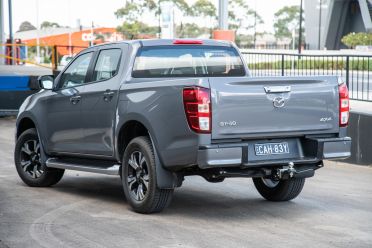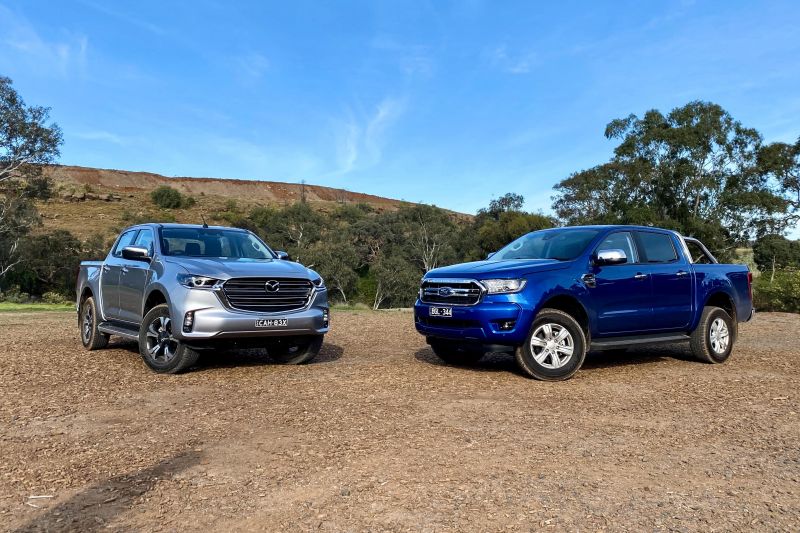Until quite recently, the Ford Ranger and Mazda BT-50 were platform-mates developed together as part of a (Ford Australia-led) joint venture.
But that inter-company relationship has since dissolved, and Mazda found a new partner for the latest-generation BT-50 in the form of Isuzu Ute.
We thought it might be interesting to put these two up against one another in their latest incarnations.
The Ranger technically remains in the same generation as the one that spawned the old BT-50, but constant updates have kept it fresh.
The variants on test are the Mazda BT-50 XTR and Ford Ranger XLT, both of which sit a rung or two below their respective range flagships. They’re also two of the most popular variants.
This twin test is a spin off from a larger-scale four-way ute test which also included the comparable Toyota HiLux and Isuzu D-Max. You can read that expanded piece here.
How much?
The respective list prices of each vehicle on test, before on-road costs, are $60,940 for the Ranger XLT Bi-Turbo and $57,210 for the Mazda BT-50 XTR grade.
But the more relevant prices are the advertised drive-away figures that include all applicable State taxes and dealer fees.
The Ranger’s current pricing offer according to Ford’s website is $58,490 drive-away with the upgraded 2.0-litre engine option, which shows you how irrelevant list prices actually can be.
By contrast the BT-50’s drive-away price technically adds up to $61,573 using Mazda’s own website pricing calculator, how if you have an ABN and plan to get your ute as a commercial buyer, the price drops to $56,490 on the road. We’d haggle towards this price either way.
What do you get?
Features common to both the Ranger XLT and BT-50 XTR include alloy wheels (18-inch on the Mazda, 17s on the Ford), LED headlights, side steps, rain-sensing wipers, and proximity key systems with button start.
The Ranger runs standard on Dunlop Grandtrek AT tyres, whereas the Mazda uses Bridgestone Dueler HTs (the same as a Toyota HiLux SR5).
Inside both come standard with climate control, cloth seat trim, satellite navigation, Apple CarPlay (wireless in the Mazda), Android Auto, digital radio, USB and 12V sockets, leather-trimmed steering wheels, reversing cameras, and auto-dimming rear-view mirrors.
The Ford’s infotainment system is displayed on an 8.0-inch touchscreen, whereas the Mazda’s uses a 9.0-inch touchscreen.
Unique features to the Ranger that come standard include a tailgate lift-assist system, sports bar, tub liner, privacy glass, FordPass smartphone app services, and a 230V interior powerpoint. The Mazda counters with free metallic paint, which is $650 on the Ford.
There are various factory options available on the Ranger including leather-accented seats ($1500), a package with adaptive cruise control and auto parking software ($800), a hardier spray-in bed liner ($300), and black 18-inch alloy wheels ($750).
Ranger also come with long accessory catalogues with bars, canopies, etc. If you’re curious you can find the Ford accessories page with pricing here. Be prepared to lose an hour as you wade through it.
If you want even more features, look into a BT-50 GT or Ranger Wildtrak.
| Ford Ranger | Mazda BT-50 | |
|---|---|---|
| Side steps | Yes | Yes |
| Wheels | 17-inch | 18-inch |
| Tyres | Dunlop AT22 Grandtrek | Bridgestone Dueler HT |
| Lights | LED | LED |
| Auto wipers | Yes | Yes |
| Button start | Yes | Yes |
| Sports bar | Yes | No |
| Privacy glass | Yes | No |
| Bed liner | Yes | No |
| A/C | Climate | Climate |
| USB and 12V | Yes | Yes |
| 230V | Yes | No |
| Steering wheel | Leather | Leather |
| Seat trim | Cloth | Cloth |
| Touchscreen | 8.0-inch | 9.0-inch |
| Android Auto | Wired | Wired |
| Apple CarPlay | Wired | Wireless |
| Sat-nav | Yes | Yes |
| DAB+ | Yes | Yes |
| Camera view | Rear | Rear |
| Auto-dim mirror | Yes | Yes |
| Remote app support | Yes | No |
Are they safe?
The days where utes were unsafe are long behind us. Both vehicles on test carry five-star ANCAP crash ratings, though only the Mazda gets the latest, most stringent 2020 date stamp (Ranger is 2015).
Common features found in both the Ranger and BT-50 as standard include dual front, front-side, and full-cabin curtain airbags, and rear child-seat attachment points. Stability control is mandatory today.
Active safety functions in both as standard include autonomous emergency braking systems, traffic-sign recognition, and a lane-keeping aid.
Here the Mazda turns the tables on the Ford, since it alone has standard active cruise control, blind-spot monitoring, rear cross-traffic alert, and both a driver’s knee airbag and a front-centre airbag to mitigate side-collision head clashes.
| Ford Ranger | Mazda BT-50 | |
|---|---|---|
| Front airbags | Yes | Yes |
| Front thorax airbags | Yes | Yes |
| Side curtain airbags | Yes | Yes |
| Driver’s knee airbag | No | Yes |
| Front-centre airbag | No | Yes |
| ANCAP date stamp | 2015 | 2020 |
| AEB other cars | Yes | Yes |
| AEB pedestrians | Yes | Yes |
| Lane-keeping aid | Yes | Yes |
| Blind-spot monitor | No | Yes |
| Traffic sign recognition | Yes | Yes |
| Rear cross-traffic alert | No | Yes |
| Active cruise control | No | Yes |
What are they like inside?
Ford Ranger:
The Ranger is getting on in age, but its interior remains super functional and fit for purpose – though it’s the only ute here without telescopic (reach) wheel adjustment. The fabric seats are manually adjustable but quite supportive. You can option leather trim if you prefer.
That padded wheel is nice in the hand, the audio and cruise buttons are ergonomic, and the twin-screen instruments look pretty nifty, though you have to choose between a digital speedo or tacho in the right screen, because the left one shows directions and multimedia.
The plastics used on the dash and fascia are rock hard but the panels are put together well, and the fact there’s no gloss black trim like you find in the Mazda means it’ll hold up better against dust, smudges, hair and other worksite mess.
While the 8.0-inch centre touchscreen isn’t the biggest in its class, Ford’s ‘Sync’ infotainment system works really well, and offers wired Apple CarPlay and Android Auto, clear maps, and a decent-resolution rear camera.
The technology gambit is strengthened by the addition of an embedded modem and FordPass app integration letting you remotely lock or start the car, and the placement of a USB point near the rear-view mirror to run a dash cam.
In terms of cabin storage there’s a single glovebox, a shallow cubby atop the dash, a decent-sized glovebox, and bottle holders in the doors, centre cupholders, and console. On the back of this console is a power point and 12V point, but no air vents for rear occupants. Rubbish!
Back-seat space is fairly generous, with room for two big blokes (I’m 194cm and was fine) to fit behind two others – indeed, there’s notably more shoulder room and knee room than the HiLux, and a few millimetres more in both directions than the Mazda.
There are rear cupholders, door bins and overhead grab handles, and for those using it for kids there are two ISOFIX and top-tether points, as there are in the Mazda.
Mazda BT-50
This is a step up over the old, tired BT-50 with its low-rent trims and aftermarket head unit. And those fabric seats give you a nice hug. Unlike its D-Max twin at this price point, the Mazda comes with button start and an auto-dimming rear mirror.
The nice leather wheel has reach adjustment unlike the Ford. There’s a welcome digitised speedo in the small screen between them. You unfortunately don’t get the signature pop-out cupholders on the extreme outsides of the dash that you do in the Isuzu.
While hardly Audi-lite, the cabin trims feel and look somewhat upmarket, though there’s a lot of shiny gloss-black pieces, and somewhat cheap-feeling ventilation rocker switches. Hat tip to the padded trim atop the dash and along the transmission tunnel to protect your knees.
The 9.0-inch touchscreen is sizable for the segment, and offers full-screen navigation, wired Android Auto, and very modern wireless Apple CarPlay.
The infotainment system boasts quick response times and decent navigation and menu graphics, though its layout could be more intuitive. You’ll adjust. The shortcuts on the screen are small but we like the use of physical buttons beneath the screen.
There’s a heap of storage. Two gloveboxes, a centre console bin, decently-sized bottle holders in each door, and a mobile phone tray at the base of the centre stack. There’s no tray on the dash top though.
One observation: compared to the D-Max, the Mazda’s contrasting trims around the upper of the two glove boxes are different, proving less squeak-prone over a stretch of corrugated gravel.
The nicely stitched back seats offer plenty of legroom for someone my height, and middling room for work boots under the front seat. There’s also large handles on the B-pillars, rear air vents, rear USB point access, and a relatively raked seat back. Plus, neat bag hooks. The back seats are 10mm narrower than the Ranger’s but you’ll scarcely notice.
For those using it for kids there are two ISOFIX and top-tether points.
| Ford Ranger | Mazda BT-50 | |
|---|---|---|
| Variant | XLT | XTR |
| Length | 5446mm | 5280mm |
| Body width | 1867mm | 1870mm |
| Height | 1821mm | 1790mm |
| Wheelbase | 3220mm | 3125mm |
| Ford Ranger | Mazda BT-50 | |
|---|---|---|
| Tub length | 1549mm | 1571mm |
| Tub width | 1560mm | 1530mm |
| Tub depth | 511mm | 490mm |
| Between arches | 1139mm | 1120mm |
| Payload | 1003kg | 1070kg |
What’s under the bonnet?
The Ranger comes with two engine options: a 3.2-litre five-cylinder diesel mated to six-speed manual or auto transmissions, or the more powerful and efficient 2.0-litre sequential bi-turbo four-cylinder diesel and 10-speed auto combination as tested here.
It makes 157kW of power, and equal-class-topping (with HiLux) peak torque of 500Nm, albeit across a slim portion of the rev band – 1750 to 2000rpm. Combined-cycle fuel economy is a low 7.4 litres per 100km, which with an 80L tank extends the theoretical range beyond 1000km.
Mazda straight-up uses the Isuzu D-Max’s overhauled 3.0-litre turbo-diesel in place of its old 3.2-litre five-cylinder. It has lower outputs on paper than the Ford, at 140kW of power and 450Nm of torque, from 1600 to 2600rpm.
It’s mated to six-speed manual or automatic transmissions, the latter of which we’re driving here, and uses a claimed 8L/100km. The tank is 76L.
Both default to rear-wheel drive (RWD) on the road, and have shift-on-the-fly 4H (4WD High) and 4L (4WD low-range) modes. These systems are controlled by switches rather than an old world separate gear shifter.
| Ford Ranger | Mazda BT-50 | |
|---|---|---|
| Variant | XLT | XTR |
| Displacement | 2.0-litre biturbo | 3.0-litre turbo |
| Cylinders | Four | Four |
| Power | 157kW @ 3750rpm | 140kW @ 3600rpm |
| Torque | 500Nm @ 1750-2000rpm | 450Nm @ 1600-2600rpm |
| Auto trans. | 10-speed | 6-speed |
| Towing capacity | 3.5 tonnes | 3.5 tonnes |
| Claimed economy | 7.4L/100km | 8.0L/100km |
| Diesel tank | 80L | 76L |
| 4×4 system type | Part-time | Part-time |
How do they drive?
Ford Ranger:
The Ford Ranger is the most ‘Australian’ vehicle on sale, given it was engineered and developed in country Victoria, for the globe. And it really does show.
Before driving this iteration of the Ranger when it launched all those years ago, I didn’t know a rear-leaf-sprung, ladder-frame workhorse could ride over sharp and corrugated surfaces with such aplomb.
You sit up nice and high, and while the lack of telescopic adjustment annoys me, the electric-assisted motor-driven steering gives you featherweight wheel movement that makes it a cinch to park and drive around town.
It’s quite softly suspended, meaning there’s a little pronounced body movement against cornering forces, and some up-and-down body movement, but it all settles down quickly enough and is so cushy and quiet you’ll scarcely care.
The engine never feels like it’s working hard, because the 10-speed ‘box rifles through its copious ratios to keep the engine in its sweet spot. But it’s clearly working harder than you think: the Ford is 150kg heavier and a bit bigger, and as such the best fuel economy I got over a long and varied loop was 10.2L/100km.
The 0-100km/h time matched the Mazda’s 9.8 seconds.
The Ranger’s approach angle is 29 degrees, the departure angle is 21 degrees, and the clearance is 237mm. A small dial engages rear-wheel drive, 4H (high range 4×4) and 4L (low range 4×4), the former of which can be accessed on the fly and the latter in neutral. Unusually for the class, the Ford’s rear diff lock (to mitigate freewheeling) works in 4H and 4L.
The ride quality remains very smooth over logs and corrugations, the throttle isn’t too touchy or sensitive, the gearbox belies its plethora of ratios and doesn’t get confused or indecisive, the downhill braking felt ok, and hill-descent control allows you to override it with throttle while keeping braking. Wading depth is an equal-class-leading 800mm.
Mazda BT-50
The electric-assisted motor-driven steering system offers up video-game levels of resistance that makes the Mazda very easy on the arms, while the slightly smaller dimensions and firmer-feeling suspension make it drive with a bit more agility than the Ford.
It’s good at ironing off sharp inputs into the cabin, but unladen the rear end never feels as settled or smooth as the Ford. Upon adding my 500kg total payload, it settled down beautifully, telling me it’s happy to carry mid-level loads.
At idle from the outside, the Mazda’s Isuzu engine can be a bit gruff, but it’s certainly less agricultural than the old BT-50’s 3.2-litre five-pot lifted from Ford.
It does a great job of delivering torque whenever you need it. The gearbox is clever enough to stay in the same gear and lean on the torque band instead of hunting through its limited ratios, and it remains smooth when moving up and down gears. Less indecisive than the Ford, which occasionally oscillates between two ratios.
The torque band of the 3.0-litre engine is broad. Unlike some diesel engines, which almost immediately drop off, there’s still at least 300Nm of torque available at 4000rpm, which means it has a punchy mid-range and also doesn’t dawdle if you stamp on the throttle.
Out on the highway and on coarse chip country roads, cabin noise isolation is excellent. It seems like Mazda put a lot of effort into cabin noise deadening, and preventing intrusion from wing mirrors and external parts exposed to the wind.
The engine is also super ‘honest’, in that fuel use oscillated between 8.5L/100km and 9L/100km – the best figures of the quartet and the closest to the ADR claims – and the 0-100km/h sprint matched the Ranger. Forget the on-paper data, the Isuzu engine was the one that lived up to, and beyond, our expectations.
A round dial controls the 4×4 system, which offers 2H, on-the-fly 4H up to 100km/h, and 4L to be engaged from neutral. The digital trip computer gives you flashy diagrams showing you the car’s status.
The rear diff-lock only works in low-range. The approach angle is just above 30 degrees, the departure is 24.2 degrees, and the clearance is 240mm.
Tackling a steep loggy hill revealed firm-ish suspension calibration causing a bit of body movement and head toss, but it otherwise walked up easily. The EPAS is super light, making off-road cornering really easy on the arms.
That clearance is helpful navigating a rocky decline, the downhill brake sensitivity is well sorted and quite progressive upon application without too much instant bite, and the hill-descent control system works unobtrusively. The wading depth is also 800mm.
| Ford Ranger | Mazda BT-50 | |
|---|---|---|
| Variant | XLT | XTR |
| Front suspension | Double wishbone, coils | Double wishbone, coils |
| Rear suspension | Rigid axle, leaf springs | Rigid axle, leaf springs |
| Front brakes | Ventilated disc | Ventilated disc |
| Rear brakes | Drums | Drums |
| Clearance | 237mm | 240mm |
| Payload max | 1003kg | 1070kg |
| Kerb weight | 2197kg | 2030kg |
| GVM | 3200kg | 3100kg |
| GCM | 6000kg | 5960kg |
Cost of ownership
Ford: Five-year/unlimited-kilometre warranty, up to seven years free roadside assist, service intervals of 12 months/15,000km. First seven visits capped at: $299, $299, $299, $299, $390, $720, $390.
Mazda: Five-year/unlimited-kilometre warranty, up to five years free roadside assist, service intervals of 12 months/15,000km. First seven visits capped at: $419, $390, $673, $496, $313, $751, $436. New fuel filter costs an extra $86 when required.
CarExpert’s Pick
It’s getting old, but the Ford Ranger is still bloody good. It’s a little larger than its main rivals, is still peerless at dispatching rural Aussie roads, has a no-frills but well-judged cabin, and you can pick one up at sharpened retail prices.
However, against our criteria the Mazda BT-50 edges it, as it should given the comparative newness of its design. Credit to the cabin tech, active safety features, competitive price, nice dynamics, and spec-defying Isuzu diesel engine.
How the tables have turned…




